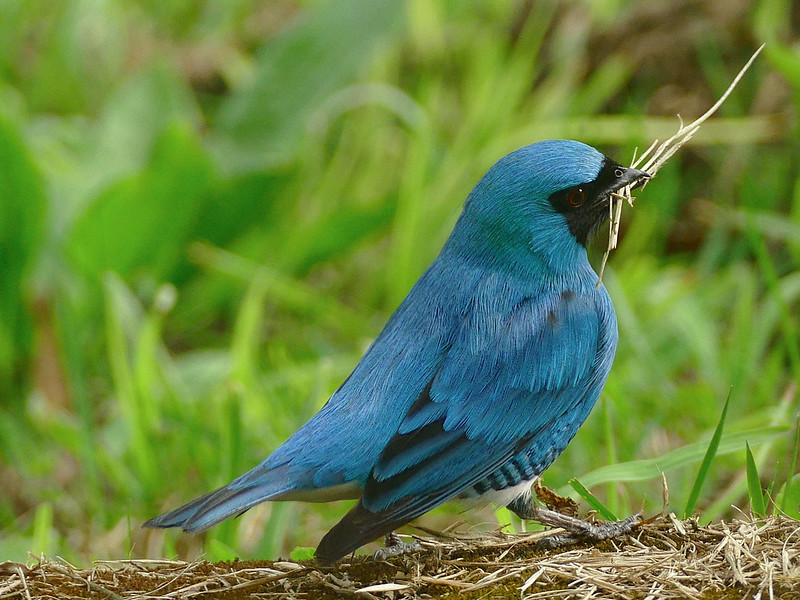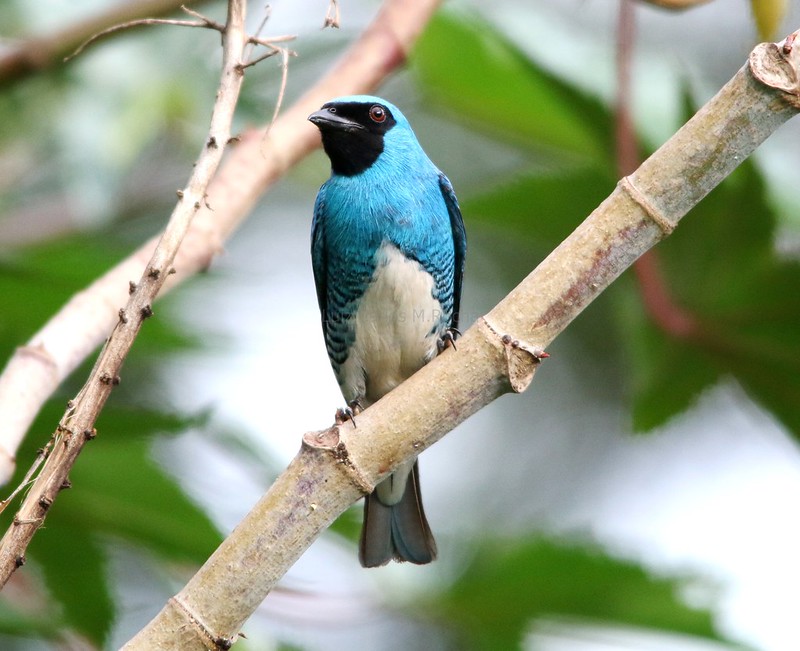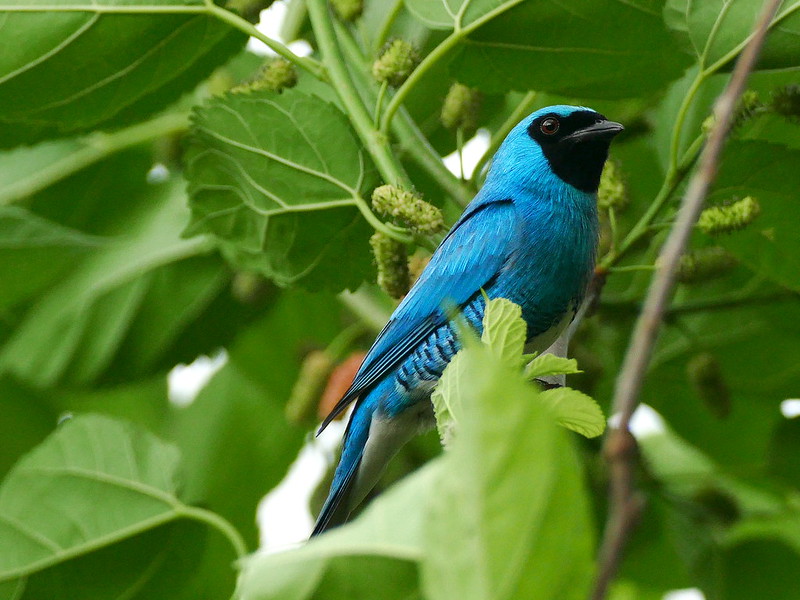The swallow tanager (Tersina viridis) is a highly unique and small bird that is widespread in lowlands and foothills up to an altitude of up to 1,800 meters. The male is opalescent blue with a black face and throat, while the female is bright green with dusky-olive barring on the flanks and lacks the black face mask. Their juveniles resemble the females. These birds can be found widely throughout South America, from Panama right down to Northern Argentina, around forest edges, open woodlands, clearings, second growths, and other areas close to water.



Swallow tanager, preferring to perch on exposed branches, likes to feed on fruit and insects. They forage for a variety of fruits, including berries and avocadoes, as well as insects such as termites, grasshoppers, and ants. They also sally out to catch insects on the wing, often taking two or three before returning to the same perch.



Swallow tanager mostly nest in cavities made by other birds and man, including in cliffs, earth banks, and even bridges. The female usually lays 3 white eggs within, subsequently incubating them for a period of around 13 – 17 days. Both parents feed the young, although the female is much more devoted to this task than the male. The young leave the nest after approximately 24 days.


This species has an extremely large range and hence does not approach the thresholds for Vulnerable on the IUCN Red List. You can watch and listen to this bird in the video below, which showcases their unique features and behaviors in their natural habitat.





